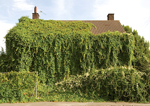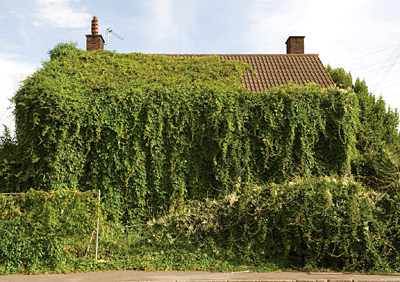Give your property an MOT
Just like our health, our houses need regular check ups. Read our top tips on how to make sure your house is in good health for winter.


Country-house upkeep is more crucial than ever, with buyers reluctant to look at properties that will prove costly to patch up. ‘Properties that had fallen into disrepair captured a premium in boom years, when buyers wanted projects, but in these cash-strapped times, buyers prefer something that's been well cared for and isn't going to throw up unpleasant financial surprises,' explains James Greenwood from Stacks Property Search & Acquisition. What starts out as a quick £50 fix can descend into a £5,000 repair if left unattended. ‘Doing little jobs as they become necessary is the best advice I can offer,' Mr Greenwood adds.
Phil Spencer, presenter of Channel 4's Location, Location, Location, compares building maintenance to dealing with your health: ‘Prevention is always better than a cure. Regular maintenance of your home is less intrusive and expensive than letting it fall into decay and having to fix it.' A trained building surveyor, Mr Spencer regularly gets his hands dirty checking and repairing both his London home and his farmhouse in Kent. ‘At this time of the year, I clean out gutters, make sure drain holes are clear and use a cane to remove debris out of air bricks. I check chimneys as well, to ensure air is circulating around.'
Geoff Isitt, a partner at Carter Jonas, advises checking your roof is watertight, re-fixing slipped or missing tiles and removing vegetation growing in masonry. ‘Leaving these items unrepaired will result in frost damage and allow damp to penetrate.'
If in doubt, do an annual ‘home MOT' in order to spot potential problems, advise the Society for the Protection of Ancient Buildings, which holds its National Maintenance Week on November 20-27.

SPAB's home MOT
1. Do you have a chimney? * is it leaning? * is there any growth coming from the top? * can you see mortar missing from the joints? All of these can lead to potential problems
2. Check your roof covering * if it's covered with tiles or slates, are any slipped or missing? Look out for tile debris and pieces of tile lying on the ground-these can be tell-tale signs of problem areas, that will allow rain to enter and cause rot very quickly
Sign up for the Country Life Newsletter
Exquisite houses, the beauty of Nature, and how to get the most from your life, straight to your inbox.
3. Look at the ridge tiles along the top of your roof * are they all there? * are there gaps where they join each other or can you see daylight through the joints? Check your tiles and slates. Gaps may indicate a need to repoint the ridge tiles
4. Check your gutters * are they leaking at joints? * do they overflow? * are they catching water from the roof or is it running down the wall? Looking at your gutters on a rainy day is the best way
5. Look behind the gutters There are soffit and fascias, and, at the end of the roof, often barge boards. If they're made of timber, check if they need painting, as bare wood rots quickly
6. Are your rainwater pipes working? l are they cracked? l are they fixed securely? l are they blocked with things such as leaves, twigs, tennis balls and even dead birds? Check your gullies: green algae or vegetation on adjacent walls is a common sign that there is a problem
7. If your windows and doors are made of timber, they need painting every three to five years * is there bare wood, especially on the sills and the lower parts of the opening sashes?
8. Look at the bottom of the rainwater pipes to check the gullies * have they been regularly cleaned? * are they working properly? If not, they can cause dampness where the build-up enables water to penetrate a wall and, possibly, cause subsidence. Trim unruly foliage 9) Check all growth against the building, especially trees, bushes and ivy * have you removed, cut back and pruned carefully where necessary? These items growing on a wall can also cause dampness and structural damage.
Visit www.maintainyourbuilding.org.uk for further advice, top tips and useful dos and don'ts from SPAB
* For more property features like this every week, subscribe and save
Country Life is unlike any other magazine: the only glossy weekly on the newsstand and the only magazine that has been guest-edited by HRH The King not once, but twice. It is a celebration of modern rural life and all its diverse joys and pleasures — that was first published in Queen Victoria's Diamond Jubilee year. Our eclectic mixture of witty and informative content — from the most up-to-date property news and commentary and a coveted glimpse inside some of the UK's best houses and gardens, to gardening, the arts and interior design, written by experts in their field — still cannot be found in print or online, anywhere else.
-
 380 acres and 90 bedrooms on the £25m private island being sold by one of Britain's top music producers
380 acres and 90 bedrooms on the £25m private island being sold by one of Britain's top music producersStormzy, Rihanna and the Rolling Stones are just a part of the story at Osea Island, a dot on the map in the seas off Essex.
By Lotte Brundle Published
-
 'A delicious chance to step back in time and bask in the best of Britain': An insider's guide to The Season
'A delicious chance to step back in time and bask in the best of Britain': An insider's guide to The SeasonHere's how to navigate this summer's top events in style, from those who know best.
By Madeleine Silver Published
